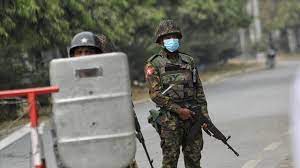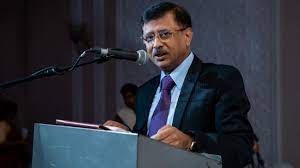Report: Myanmar Junta’s War Crimes Increasing in Frequency and Brutality
According to the most recent assessment by a UN Human Rights Council group, there is compelling evidence that the Myanmar military and its affiliated militias are committing egregious war crimes more often and openly.
The Independent Investigative Mechanism for Myanmar (Mechanism) details these war crimes in its annual report, which was published on August 8. These crimes include indiscriminate or excessive aerial bombing strikes on civilians, such the military bombardment in Sagaing in April that left over 155 people dead.
The study also notes a rise in the widespread and deliberate burning of civilian houses and structures, which in some instances has resulted in the devastation of whole towns. Mass killings of civilians and combatants in detention have reportedly increased.
The destruction inflicted to whole communities by aircraft bombardments and village burnings is especially alarming, according to Nicholas Koumjian, Head of the Mechanism. “Every loss of life in Myanmar is tragic, but this devastation caused to whole communities through aerial bombardments and village burnings is particularly shocking,” he said. We are compiling case files that courts may use to bring specific offenders accountable. “Our evidence points to a dramatic increase in war crimes and crimes against humanity in the country, with widespread and systematic attacks against civilians.”
According to the paper, the Myanmar military has justified aerial bombs targeting military sites, including schools and monasteries. The Mechanism’s findings, however, suggests that the military should or did know that several civilians were present in or close to purported military targets during some of these operations.
According to the findings of the Mechanism, military leaders are obligated by international law to prevent and punish war crimes committed by individuals who are under their authority, and they risk criminal liability if they fail to take reasonable efforts to do so. According to the Mechanism, “repeatedly ignoring such crimes may indicate that the higher authorities intended the commission of these crimes.”
The Mechanism has gathered information from more than 700 sources, including more than 200 eyewitness accounts, as well as additional evidence like photographs, videos, audio material, documents, maps, geospatial imagery, social media posts, and forensic evidence in its investigations into the most serious international crimes committed in Myanmar.
The UN rights organization is still actively looking into the incidents of violence that resulted in the widespread eviction of the Rohingya from Myanmar in 2016 and 2017. The research specifically highlights how often sexual and gender-based crimes against the Rohingya are at the moment. One of the most horrific crimes that Koumjian’s team is looking into is gender- and sexual-based criminality. The majority of the witnesses we spoke with had pertinent information regarding how ubiquitous they were throughout the Rohingya cleansing operations.







